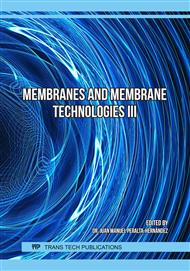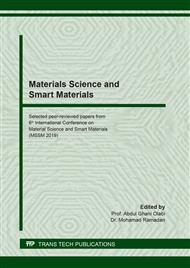p.55
p.61
p.67
p.73
p.79
p.85
p.91
p.97
p.105
Performance Evaluation of a Novel Hydrophobic Membrane Used in a Desalination System: A Comparison between Static and Moving Configurations
Abstract:
Water scarcity is growing and in particularly in regions where population is high. It is estimated by world wild life organization that two thirds of human population may face water shortage by 2025. However, the amount of water available on earth covers approximately two thirds of the total surface area, but most of the water is seawater. Seawater cannot be used for any human use due to the high salinity levels. Desalination processes have been implemented on various scales whereby reverse osmosis is the most successful. However, such system is too complex and expensive. An alternative system utilizing humidification-dehumidification process for desalination is proposed in this paper. The process involves the use of a novel hydrophobic membrane allowing the humidification. Two configurations have been tested in a closed loop cycle, namely: static and moving membrane. The results from the experiments have shown that the efficiency of the moving membrane configuration is higher than the static by 46%. And based on 1 Litre brine feed, 50% of the volume has been successfully desalinated.
Info:
Periodical:
Pages:
79-84
Citation:
Online since:
September 2020
Authors:
Keywords:
Price:
Сopyright:
© 2020 Trans Tech Publications Ltd. All Rights Reserved
Share:
Citation:




